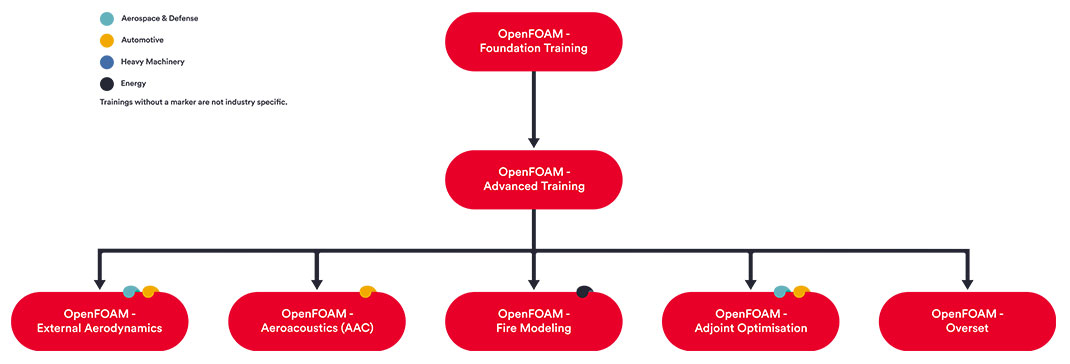OpenFOAM - Aeroacoustics (AAC)
Learn how to use effectively OpenFOAM to Aeroacoustics, Hydroacoustics and Hydro/Aero-Vibroacoustics simulations. Learn industrial best practices. Learn AAC theory and modeling options to improve your simulations accuracy, stability, and robustness.



Audience
CFD Engineers with interest in Aeroacoustics, Hydroacoustics and Hydro/Aero-Vibroacoustics.

Prerequisites


LEARNING PATH



SUGGESTED COURSES

概要
This course covers Theoretical and Applied concepts in Computational Aeroacoustics (CAA) using OpenFOAM, touching on progressive Multiphysics design challenges, e.g. Aero-Vibro-acoustics (AVA). The course organisers are leading experts in flow-noise source prediction, propagation and noise abatement in all engineering sectors including transportation (Automotive, Aerospace, Marine, Rail), energy, power generation, building environment and turbomachinery.
お探しのものが見つかりませんでしたか?
カスタマイズトレーニングを依頼

TRAINING PROGRAM
Day 1
- Basics - aeroacoustics source and propagation mechanisms, including a shallow dive into classical theory
- Narrowband (tonal) and broadband flow noise
- Spatial and Temporal considerations (mesh and time-step)
- Turbulence and wall-modelling
- Steady-state: fast approximations of source mechanisms and ratings
- Surface based (shear-flow correlation)
- Volume based (Lilley-Proudman correlation)
- Transient:
- Appropriate physics modelling and boundary conditions for aeroacoustics
- Numerical control settings in OpenFOAM
- Pure acoustics in OpenFOAM?
- Spectral postprocessing using the built-in OpenFOAM point-based and surface-based temporal-Fourier analysis tools
- Noise Propagation to the far-field using acoustics analogies, e.g. Curle
- General hints and tips
- Insights into coupling with Acoustic propagation codes for acoustics and vibroacoustics using SEA, FEA and BEM